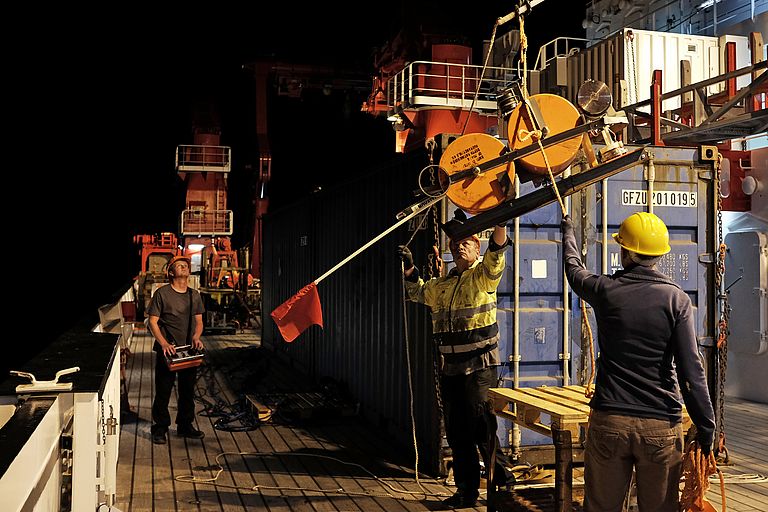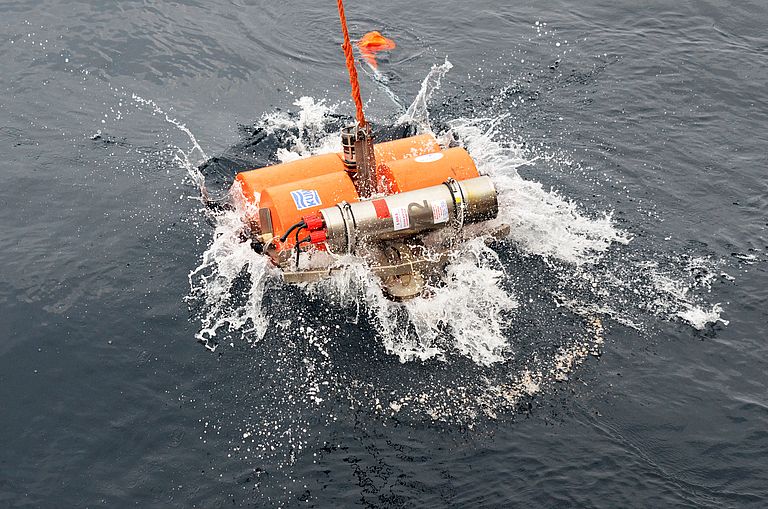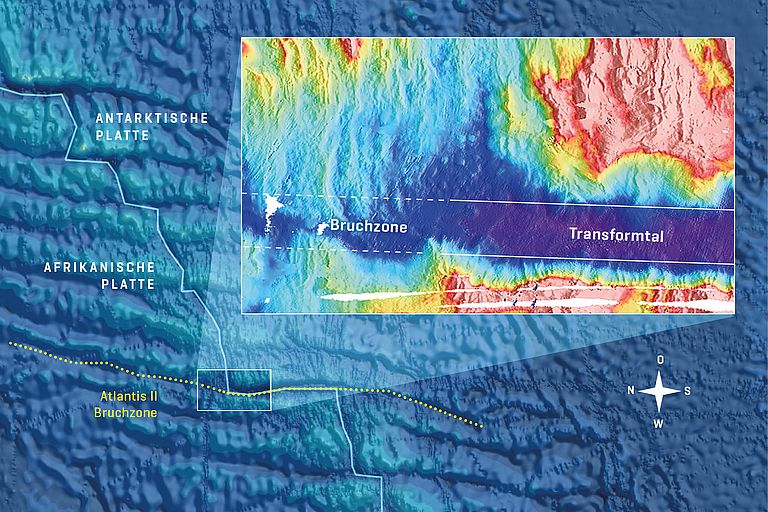Shifting the theories of plate tectonics
GEOMAR researchers receive Advanced Grant of the European Research Council
Our Earth is shaped by large plates slowly drifting apart, towards or underneath each other, forming mountain ridges and trenches, triggering earthquakes and volcanism. Because most of their boundaries are covered by the deep ocean, they are difficult to study. As a consequence, although the theory of plate tectonics has widely been accepted more than 50 years ago, many questions still remain. Of the three different types of plate boundaries, two received most scientific attention: the mid-ocean ridges where new ocean floor is formed and subduction zones where the lithosphere is recycled back into the Earth’s interior. The third type, the oceanic transform fault, was so far considered less important. Supported by one of the precious Advanced Grants of the European Research Council (ERC), a team of researchers led by Professor Dr. Ingo Grevemeyer, marine geologist at GEOMAR Helmholtz Centre for Ocean Research Kiel, will revisit the concept of oceanic transform faults and update the theory of plate tectonics. Their new project “Transformers” will be funded by the ERC with 2.8 million Euros for five years.
“Tectonic plates are kept in motion by the cycle of crustal material that subsides to the Earth’s interior at convergent boundaries, where it melts and drifts back to the sea floor at zones of divergence zones to form new oceanic crust. But the margins of tectonic plates cannot be seen as smooth straight lines. Scars and valleys cut across them, and there can be offsets – these are the transform faults that have been overlooked for so long”, explains Professor Grevemeyer. According to the marine geophysicist from Kiel, the structure of these systems is far from being consistent with the predictions made by plate tectonics governing the motion of Earth tectonic plates. “The ‘Transformers’ project will help to better understand the complex behaviour of transform faults, reveal how much crustal material they contribute to the formation of new crust and reveal their seismic activity that is important for earthquake hazards.”
The researchers plan six sea-going expeditions to the 120 kilometres long “Oceanographer” fault located southwest of the Azores in the Atlantic Ocean and the 850 kilometres long “Romanche” fracture zone just north of the equator between Brazil and West Africa. “The project will bring together expertise from the GEOMAR Research Division ‘Dynamics of the Ocean Floor’ and make the best use of our state-of-the art infrastructure for seafloor seismology, geodesy and marine geology, says Professor Dr. Ingo Grevemeyer.”
We are very proud and congratulate Ingo Grevemeyer to this outstanding award. With this new grant, the ERC once again recognizes the expertise of the GEOMAR research division ‘Dynamics of the Ocean Floor’”, emphasises GEOMAR director Professor Dr. Katja Matthes. “Together with colleagues from the research division, ‘Ocean Circulation and Climate Dynamics’, they received an ERC Synergy Grant for their project T-SECTOR very recently. In addition, the projects PRE-COLLAPSE, also from ‘Dynamics of the Ocean Floor’ and ‘Ocean Glow’ from the Research Division ‘Marine Biogeochemistry’ are supported by Starting Grants. This illustrates the ground-breaking and forward-looking character of our work and successful cooperation across research divisions.”
In the new funding round, the European Research Council (ERC) will support 218 Advanced Grants in a wide range of fields, from medicine and physics to social sciences and humanities with 544 million Euros. The call for proposals attracted nearly 1,650 applications, which were reviewed by panels of renowned researchers. The laureates of this grant competition will carry out their projects at universities and research centres in 20 countries in Europe, with the highest number of projects in Germany (37), the UK (35), France (32) and Spain (16). The winners come from all over the world, with 27 nationalities represented.
“These new ERC Advanced Grantees are a testament to the outstanding quality of research carried out across Europe. I am especially pleased to see such a high number of female researchers in this competition and that they are increasingly successful in securing funding. We look forward to seeing the results of the new projects in the years to come, with many likely to lead to breakthroughs and new advances”, says ERC President Maria Leptin.
Background: European Research Council (ERC) Grants:
The European Research Council (ERC), set up by the European Union in 2007, is the premier European funding organisation for excellent frontier research. It funds creative researchers of any nationality and age, to run projects based across Europe. The ERC offers four core grant schemes: Starting Grants (for scientists having gotten their doctoral degrees recently), Consolidator Grants (scientists in the intermediate stage of their career), Advanced Grants (for senior scientists) and Synergy Grants (for projects which require combining the expertise of multiple scientists from different fields). The ERC is led by an independent governing body, the Scientific Council. Since 1 November 2021, Maria Leptin is the President of the ERC. The overall ERC budget from 2021 to 2027 is more than 16 billion euros, as part of the Horizon Europe programme, under the responsibility of the European Commissioner for Innovation, Research, Culture, Education and Youth, Mariya Gabriel.

The team of expedition SO244 with the German research vessel SONNE deploys an ocean bottom seismometer off the coast of northern Chile. Photo: Jan Steffen/GEOMAR

Deployment of an ocean bottom seismometer off northern Chile. Photo: Jan Steffen/GEOMAR

Example of an oceanic transform fault: The Atlantis II fracture zone in the southwestern Indian Ocean with a zoom on the northern corner. The greater water depth in the transform valley is clearly visible. As the plates move, magmatism in the corners refills the deep transform valleys so that the adjacent fracture zones are shallower. Graphic: Christoph Kersten/GEOMAR according to Grevemeyer et al., 2021


